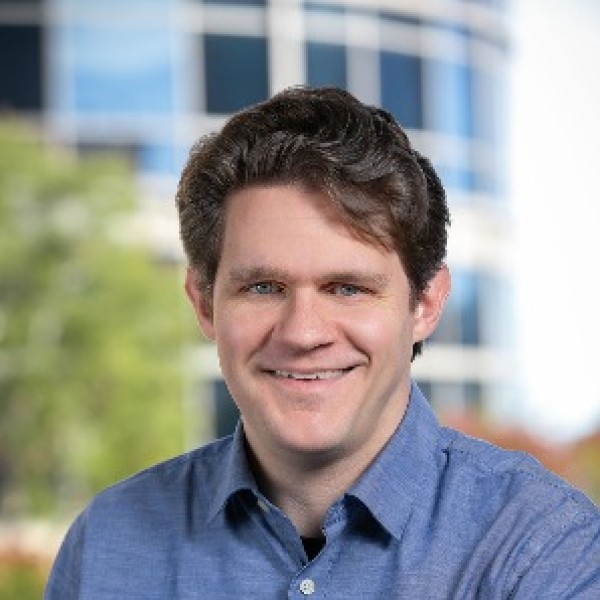Bioinformatics, ISSN: 13674803
Zhenru Zhou; Qui Phung; Corey Bakalarski
Journal of Proteome Research, ISSN: 15353907 15353893
Trent B. Hinkle; Corey E. Bakalarski
Characterizing Biotherapeutics Analytical Methods for Diverse Modalities,
Alissa Dupuy Guarnaccia; Corey E. Bakalarski; Wendy N. Sandoval; Jennie R. Lill
Analytical Chemistry, ISSN: 00032700
Wilson Phung; Corey Bakalarski; Trent Hinkle; Wendy N. Sandoval; Michael T. Marty
Molecular and Cellular Proteomics, ISSN: 15359484 15359476
Philamer C. Calses; Victoria Pham; Alissa D. Guarnaccia; Meena Choi; Erik Verschueren; Sietske T. Bakker; Trang Pham; Trent Hinkle; Chad Liu; Matthew T. Chang; Noelyn Kljavin; Corey Bakalarski; Benjamin Haley; Jianing Zou; Cuicui Yan; Xia Song; Xiaoyan Lin; Rebecca Rowntree; Alan Ashworth; Anwesha Dey; Jennie R. Lill
Nature Aging, ISSN: 26628465
Borislav Dejanovic; Tiffany Wu; Ming-Chi Tsai; David Graykowski; Vineela D. Gandham; Christopher M. Rose; Corey Bakalarski; Hai Ngu; Yuanyuan Wang; Shristi Pandey; Mitchell G. Rezzonico; Brad A. Friedman; Rose Edmonds; Ann De Mazière; Raphael Rakosi-Schmidt; Tarjinder Singh; Judith Klumperman; Oded Foreman; Michael C. Chang; Luke Xie; Morgan Sheng; Jesse E. Hanson
Nature Aging,
Borislav Dejanovic; Tiffany Wu; Ming-Chi Tsai; David Graykowski; Vineela D. Gandham; Christopher M. Rose; Corey Bakalarski; Hai Ngu; Yuanyuan Wang; Shristi Pandey; Mitchell G. Rezzonico; Brad A. Friedman; Rose Edmonds; Ann De Mazière; Raphael Rakosi-Schmidt; Tarjinder Singh; Judith Klumperman; Oded Foreman; Michael C. Chang; Luke Xie; Morgan Sheng; Jesse E. Hanson
Proceedings of the National Academy of Sciences of the United States of America, ISSN: 10916490 00278424
Christopher W. Davies; Irma B. Stowe; Qui Phung; Hoangdung Ho; Corey Bakalarski; Aaron Gupta; Yingnan Zhang; Jennie R. Lill; Jian Payandeh; Nobuhiko Kayagaki; James T. Koerber
Cell, ISSN: 10974172 00928674
Erik Verschueren; Bushra Husain; Kobe Yuen; Yi Sun; Sairupa Paduchuri; Yasin Senbabaoglu; Isabelle Lehoux; Tia A. Arena; Blair Wilson; Steve Lianoglou; Corey Bakalarski; Yvonne Franke; Pamela Chan; Athena W. Wong; Lino C. Gonzalez Jr.; Sanjeev Mariathasan; Shannon J. Turley; Jennie R. Lill; Nadia Martinez-Martin
Neuron, ISSN: 10974199 08966273
Borislav Dejanovic; Melanie A. Huntley; Ann De Mazière; William J. Meilandt; Tiffany Wu; Karpagam Srinivasan; Zhiyu Jiang; Vineela D. Gandham; Brad A. Friedman; Hai Ngu; Oded Foreman; Richard A. D. Carano; Ben Chih; Judith Klumperman; Corey Bakalarski; Jesse E. Hanson; Morgan Sheng
Analytical Characterization of Biotherapeutics,
Corey Bakalarski; Wendy N. Sandoval; Jennie R. Lill
Nature Biotechnology, ISSN: 15461696 10870156
Corey Bakalarski; Yutian Gan; Ingrid E. Wertz; Jennie R. Lill; Wendy N. Sandoval
Cell Reports, ISSN: 22111247
Leonard D. Goldstein; James Lee; Florian Gnad; Christiaan N. Klijn; Annalisa Schaub; Jens Reeder; Anneleen Daemen; Corey Bakalarski; Thomas Holcomb; David S. Shames; Ryan J. Hartmaier; Juliann Chmielecki; Somasekar Seshagiri; Robert Gentleman; David Stokoe
Molecular and Cellular Proteomics, ISSN: 15359484 15359476
Corey Bakalarski; Donald S. Kirkpatrick
Cell Reports,
Leonard D. Goldstein; James Lee; Florian Gnad; Christiaan N. Klijn; Annalisa Schaub; Jens Reeder; Anneleen Daemen; Corey Bakalarski; Thomas Holcomb; David S. Shames; Ryan J. Hartmaier; Juliann Chmielecki; Somasekar Seshagiri; Robert Gentleman; David Stokoe
PLoS ONE, ISSN: 19326203
Alison Coady; Min Xu; Qui Phung; Tommy K. Cheung; Corey Bakalarski; Mary Kate Alexander; Sophie M. Lehar; Janice Kim; Summer Park; Man-Wah Tan; Mireille Nishiyama
Biochemical Journal, ISSN: 14708728 02646021
Eugene Varfolomeev; Anita Izrael-Tomasevic; Kebing Yu; Daisy J. Bustos; Tatiana Goncharov; Lisa D. Belmont; Alexandre Masselot; Corey Bakalarski; Donald S. Kirkpatrick; Domagoj Vucic
Journal of Infectious Diseases, ISSN: 15376613 00221899
Binh An Diep; Qui Phung; Shailesh V. Date; David Arnott; Corey Bakalarski; Min Xu; Nakamura; Danielle L. Swem; Mary Kate Alexander; Hoan N. Le; Thuy T. Mai; Man-Wah Tan; Eric J. Brown; Mireille Nishiyama
Nature, ISSN: 14764687 00280836
Baris Bingol; Joy S. Tea; Lilian Phu; Mike Reichelt; Corey Bakalarski; Qinghua Song; Oded Foreman; Donald S. Kirkpatrick; Morgan Sheng
Nature, ISSN: 14764687 00280836
Norihiro Nakamura; Jennie R. Lill; Qui Phung; Zhaoshi Jiang; Corey Bakalarski; Ann De Mazière; Judith Klumperman; Megan Schlatter; Lélia Delamarre; Ira Mellman
Proceedings of the National Academy of Sciences of the United States of America, ISSN: 10916490 00278424
Donald S. Kirkpatrick; Daisy J. Bustos; Taner Dogan; Jocelyn Chan; Lilian Phu; Amy Young; Lori S. Friedman; Marcia Belvin; Qinghua Song; Corey Bakalarski; Klaus P. Hoeflich
Molecular and Cellular Proteomics, ISSN: 15359476 15359484
Daisy J. Bustos; Corey Bakalarski; Yanling Yang; Junmin Peng; Donald S. Kirkpatrick
Science, ISSN: 10959203 00368075
Anwesha Dey; Dhaya Seshasayee; Rajkumar Noubade; French; Jinfeng Liu; Mira S. Chaurushiya; Donald S. Kirkpatrick; Victoria Pham; Jennie R. Lill; Corey Bakalarski; Jiansheng Wu; Lilian Phu; Paula Katavolos; Lindsay M. LaFave; Omar Abdel-Wahab; Zora Modrusan; Somasekar Seshagiri; Ken Dong; Zhonghua Lin; Mercedesz Balazs; Rowena Suriben; Kim Newton; Sarah G. Hymowitz; Guillermo Garcia-Manero; Flavius Martin; Ross L. Levine; Vishva M. Dixit
Journal of Proteome Research, ISSN: 15353893 15353907
Victoria Pham; Pitti; Veronica G. Anania; Corey Bakalarski; Daisy J. Bustos; Suchit Jhunjhunwala; Qui Phung; Kebing Yu; William F. Forrest; Donald S. Kirkpatrick; Avi Ashkenazi; Jennie R. Lill
Molecular and Cellular Proteomics, ISSN: 15359476 15359484
Lilian Phu; Anita Izrael-Tomasevic; Marissa L. Matsumoto; Daisy J. Bustos; Jasmin N. Dynek; Anna V. Fedorova; Corey Bakalarski; David Arnott; Deshayes; Vishva M. Dixit; Robert F. Kelley; Domagoj Vucic; Donald S. Kirkpatrick
